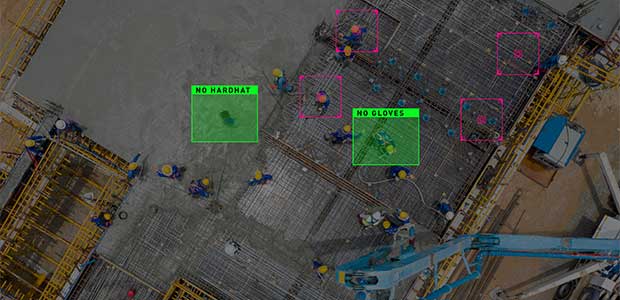
Greater Profitability and Worker Safety with Visual AI
Using visual AI with CCTV cameras can turn the technology into a proactive analytical asset.
- By Cory Rhoads
- Nov 23, 2022
Despite stringent workplace safety initiatives and regulations, injuries continue to occur at job sites across the U.S. The National Safety Council (NSC), a U.S. nonprofit safety advocate, reported that the total cost of work injuries in 2019 was $171 billion, which includes wage and productivity losses and medical and administrative expenses. With 15 percent of all workplace incidents, manufacturing holds one of the highest rates of workplace injuries.
In the 11 months from October 2019 to September 2020, there were more than 10,000 OSHA violations in the manufacturing sector, resulting in employers spending an average of $120,000 for each workplace injury and nearly $38 million in penalties industry-wide.
NSC reports that the leading causes of work-related injuries are overexertion, slips, trips, falls and contact with objects and equipment. Fatigue and stress also contribute to issues in manufacturing facilities, including failure to comply with lockout/tagout procedures of hazardous electrical, mechanical, chemical and other energy sources; improper respiratory protection, which was exceptionally high during the COVID-19 pandemic; disengaged machine guards to prevent bodily injuries; and incidents with powered industrial trucks, forklifts and other vehicles.
Although the manufacturing industry has always embraced technological advances that have driven the industry forward, primarily scientific, industrial and engineering advances, traditional means of processing information are insufficient to provide real-time actional recommendations. Also, manually managing safety audits, inspections and behavior-based safety observations is inadequate.
Other areas that plague manufacturers are quality control and operational throughput—which go hand in hand.
Quality control cannot be understated. By adopting processes and creating an environment where management and employees strive for perfection, customers deservedly receive defect-free products that meet their needs. It requires rigorous personnel training, creating and meeting product quality benchmarks and examining products for statistically significant variations. Throughput rates are an indicator of factory performance. They are the number one metric for assessing the quality of a production line. It signals overall plant efficiency and demonstrates whether the facility can progress at the rate of customer demand.
Visual artificial intelligence (AI), computer vision, has become a game changer for discrete and process manufacturers. In utilizing visual AI, manufacturers are realizing greater efficiencies, real-time demand forecasting, higher product quality, inventory management, improved safety and reduced downtime.
The manufacturing industry was an early adopter of video camera surveillance to replace security guards and other traditional security technologies. Closed-circuit televisions (CCTVs) currently provide around-the-clock surveillance of hazardous areas. They are also used as management, quality control and safety guideline insurance tools but are limited by their scope. The traditional approach to CCTVs was to collect and store visual data, but only if the basic CCTV camera is pointed at the appropriate areas and staff is dedicated to watching them at all hours of every day, they provide retrospective evidence.
In arming existing CCTV systems with visual AI, computers and systems can capture and interpret meaningful information from image and video data and respond accordingly. The role of computer vision within AI is to “see and understand” camera input.
CCTV cameras equipped with AI capabilities are transformed into proactive analytical assets that provide actionable insights and automated alerts to manage risk, processes and operations better. By applying machine learning models to images and videos like those captured by CCTV cameras, the system monitors operations 24/7/365 to accurately identify and classify objects and scenarios and decide the next best action to take based on what the cameras pick up. Deep learning models exploit the hierarchical nature of vision—automatically learning low-to-high-level features from which advanced computer vision tasks are composed and attain levels of performance and accuracy that exceed human vision.
Implementing a visual AI platform should easily scale within a manufacturing operational framework and be fully customized for high-ROI applications specific to individual business needs. It also needs to have the capability of understanding and reacting to complex scenes and multi-frame activities to proactively correct problems and situations before they happen.